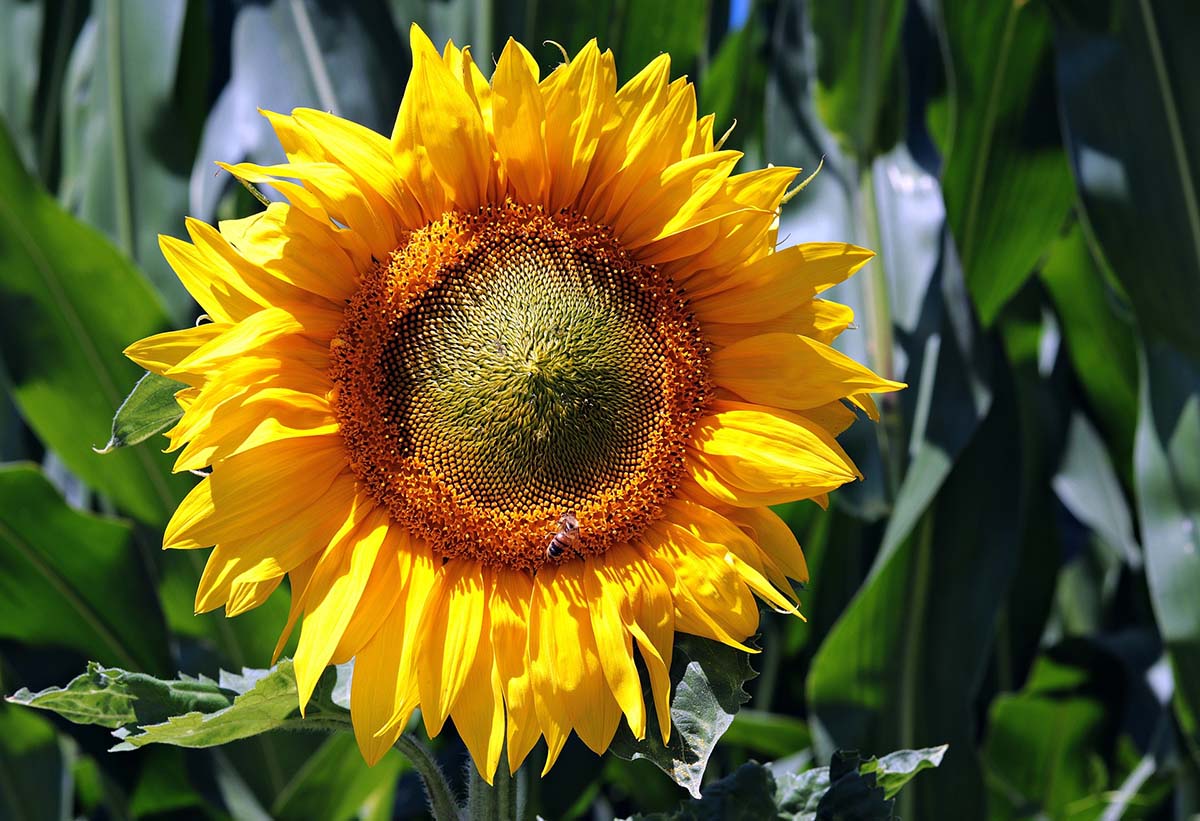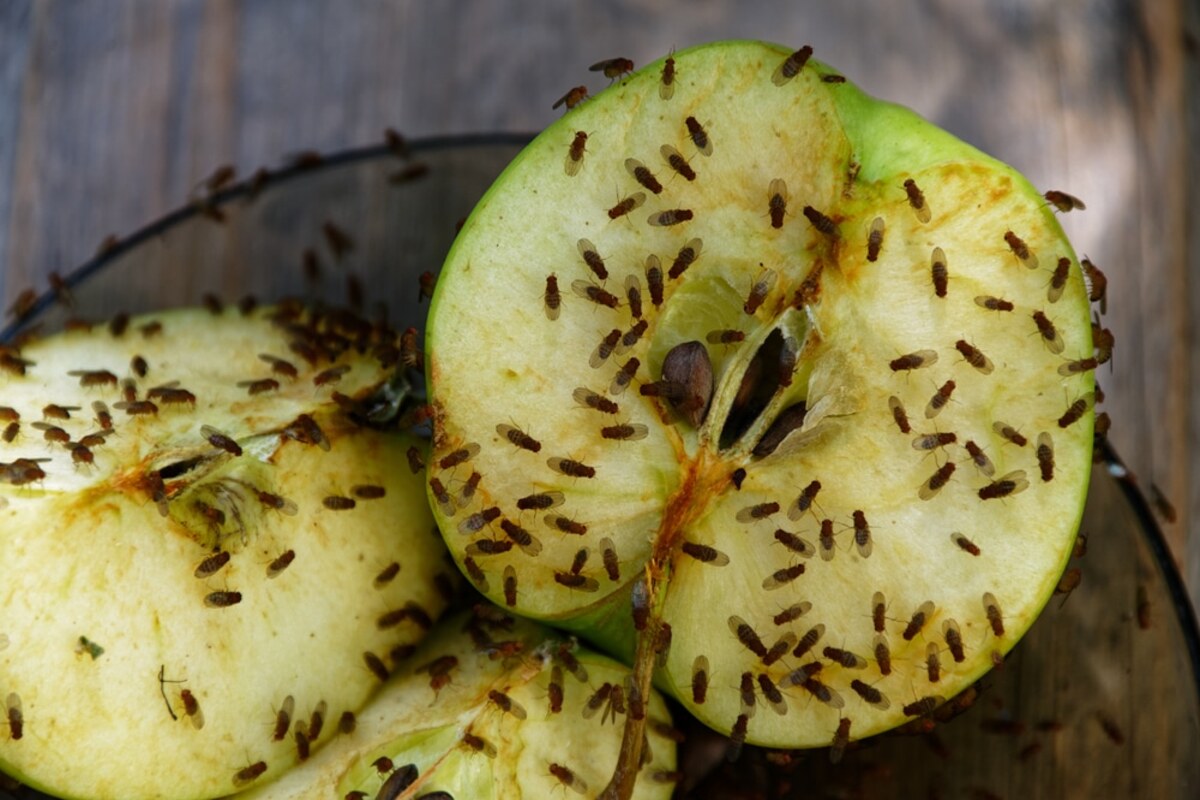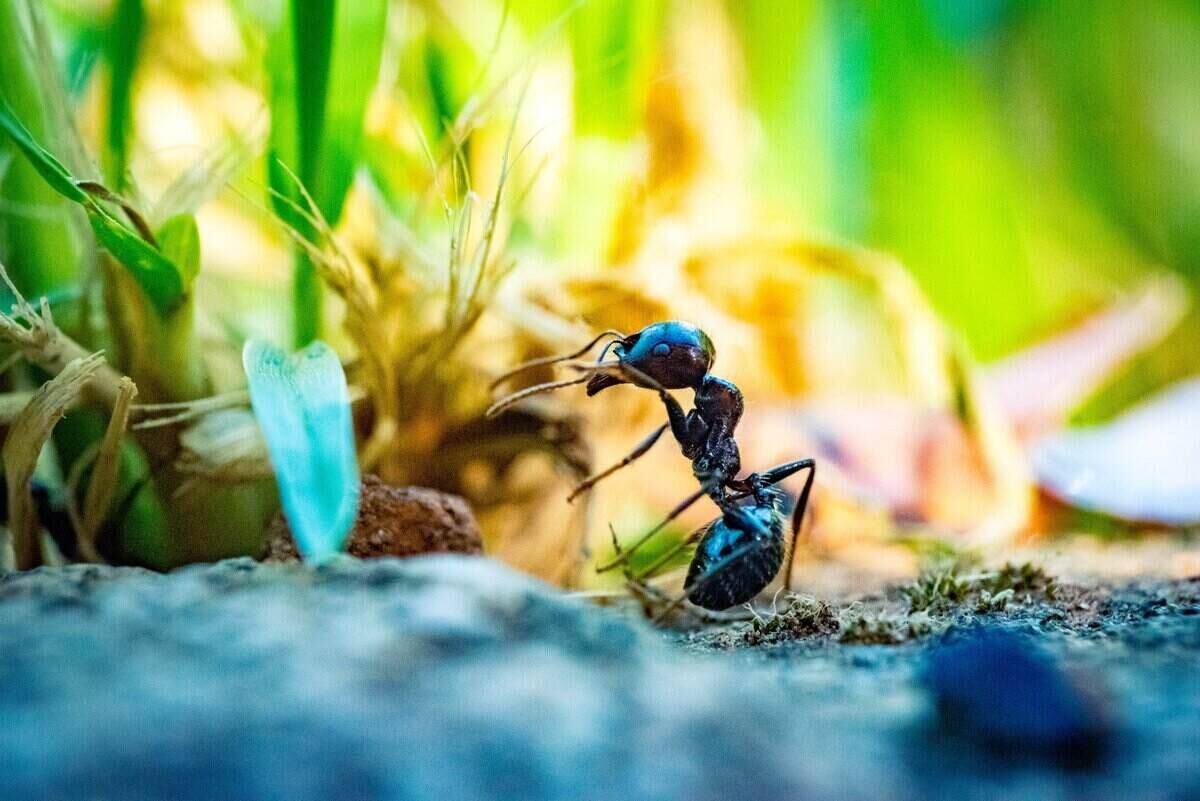Home>Gardening Tips and Tricks>Problem Solving>How To Get Rid Of Bugs On Sunflowers


Problem Solving
How To Get Rid Of Bugs On Sunflowers
Published: December 20, 2023
Learn effective problem-solving techniques to eliminate bugs on sunflowers. Discover expert tips and remedies for a bug-free sunflower garden.
(Many of the links in this article redirect to a specific reviewed product. Your purchase of these products through affiliate links helps to generate commission for Chicagolandgardening.com, at no extra cost. Learn more)
Table of Contents
Introduction
Sunflowers are not only a beautiful addition to any garden, but they also play a crucial role in the ecosystem, providing food and habitats for various insects and animals. However, when unwanted bugs infest sunflowers, they can wreak havoc on these vibrant plants. As a sunflower enthusiast, it's essential to understand the various types of bugs that can affect your sunflowers and the best methods for addressing these infestations.
In this comprehensive guide, we will explore the diverse range of bugs that commonly target sunflowers, from aphids and caterpillars to beetles and weevils. Additionally, we will delve into effective natural remedies and chemical solutions for bug control, providing you with the knowledge and tools necessary to protect your sunflowers from these pesky invaders.
By gaining a deeper understanding of the bugs that pose a threat to sunflowers and learning how to combat them effectively, you can ensure the continued health and vibrancy of your sunflower garden. Let's embark on this enlightening journey to discover the best strategies for getting rid of bugs on sunflowers.
Identifying the Bugs
Before implementing any pest control measures, it is crucial to accurately identify the specific bugs infesting your sunflowers. By recognizing the distinct characteristics and behaviors of these pests, you can tailor your approach to effectively combat their presence.
Common bugs that target sunflowers include aphids, which are small, soft-bodied insects that can be green, black, or brown. These pests often cluster on the undersides of leaves and consume plant sap, causing wilting and deformation. Another prevalent sunflower invader is the caterpillar, typically identified by its cylindrical body and voracious appetite for sunflower foliage. Additionally, beetles and weevils are known to inflict damage on sunflowers, leaving behind chewed leaves and stems.
Identifying these bugs may require close observation of the affected sunflower plants. Look for physical signs such as chewed leaves, distorted growth, or the presence of honeydew, a sticky substance excreted by aphids. By understanding the unique attributes of each pest, you can determine the most appropriate course of action to eliminate them from your sunflower garden.
Natural Methods to Get Rid of Bugs
When it comes to combating bug infestations on sunflowers, natural methods offer an environmentally friendly and sustainable approach to pest control. These methods not only effectively eliminate pests but also help maintain the overall ecological balance of your garden.
One natural solution involves introducing beneficial insects such as ladybugs, lacewings, and parasitic wasps, which are natural predators of aphids, caterpillars, and other common sunflower pests. These beneficial insects can be attracted to your garden by planting nectar-rich flowers and providing suitable habitats, creating a natural ecosystem that keeps pest populations in check.
Furthermore, homemade insecticidal soaps and neem oil sprays can be used to directly target and eradicate pests while minimizing harm to beneficial insects and other wildlife. These natural remedies are gentle on sunflower plants and can be applied without posing significant risks to the environment.
Additionally, practicing good garden hygiene, such as removing debris and weeds that can harbor pests, and employing physical barriers like row covers can help prevent bug infestations from taking hold in the first place. By embracing these natural approaches, you can effectively manage bug populations in your sunflower garden while promoting a healthy and thriving ecosystem.
Chemical Solutions for Bug Control
While natural methods are often preferred for managing bug infestations on sunflowers, there are instances where chemical solutions may be necessary to address severe or persistent pest problems. It is important to approach the use of chemical insecticides with caution, ensuring that they are applied responsibly and in accordance with safety guidelines.
When considering chemical options, it is essential to select insecticides specifically formulated for the target pests while minimizing harm to beneficial insects and the surrounding environment. Contact insecticides, such as pyrethroids, can effectively control aphids, caterpillars, and beetles by directly targeting the pests upon application. Systemic insecticides, which are absorbed by the plants and distributed throughout their tissues, can provide long-lasting protection against a range of pests.
Prior to using any chemical insecticide, carefully read and follow the product label instructions, taking necessary precautions to protect yourself, beneficial insects, and non-target organisms. Additionally, consider the timing of application to minimize potential impacts on pollinators and other wildlife.
It is important to note that chemical solutions should be viewed as a last resort and integrated as part of an overall pest management strategy that prioritizes the use of natural and preventive measures whenever possible. By exercising responsible and targeted use of chemical insecticides, you can effectively address severe bug infestations while minimizing adverse effects on the environment.
Preventing Future Infestations
After successfully addressing a bug infestation on your sunflowers, it is crucial to implement proactive measures to prevent future occurrences and maintain the health of your garden. By incorporating preventive strategies, you can create an environment that is less conducive to pest infestations, promoting the long-term well-being of your sunflowers.
One effective method for preventing future infestations is to practice crop rotation, which involves alternating the location of sunflowers with different plant species in subsequent growing seasons. This disrupts the life cycles of pests that are specific to sunflowers, reducing the likelihood of reinfestation.
Furthermore, promoting biodiversity in your garden by planting a variety of flowers, herbs, and companion plants can attract beneficial insects and create a balanced ecosystem that naturally regulates pest populations. Additionally, maintaining optimal soil fertility and providing proper irrigation and drainage can help strengthen sunflowers, making them more resilient to pest attacks.
Regular monitoring of your sunflower plants for early signs of pest activity is essential for prompt intervention. By identifying and addressing potential issues at an early stage, you can prevent small pest populations from developing into full-blown infestations. This can be achieved through routine inspections of leaves, stems, and undersides of foliage, enabling you to take timely action if pests are detected.
Lastly, fostering a healthy garden environment by eliminating standing water, removing plant debris, and practicing proper weed management can create an inhospitable habitat for pests, reducing the likelihood of infestations. By integrating these preventive measures into your gardening practices, you can fortify your sunflowers against future bug invasions and sustain a thriving and resilient garden ecosystem.
Conclusion
Successfully maintaining the health and vitality of sunflowers involves a multifaceted approach to bug management, encompassing identification, intervention, and prevention. By familiarizing yourself with the diverse range of pests that target sunflowers and adopting effective control methods, you can safeguard your sunflower garden from detrimental infestations.
Through the utilization of natural methods, such as attracting beneficial insects and implementing organic pest control remedies, you can mitigate bug populations while preserving the ecological balance of your garden. These environmentally friendly approaches not only protect sunflowers but also contribute to the overall sustainability of your gardening practices.
When considering chemical solutions for bug control, it is imperative to exercise caution and prioritize the responsible use of insecticides. By adhering to safety guidelines and integrating chemical options as part of a comprehensive pest management strategy, you can address severe infestations while minimizing adverse effects on the environment.
Furthermore, preventing future infestations through proactive measures such as crop rotation, biodiversity promotion, and routine monitoring is essential for sustaining a resilient and pest-resistant sunflower garden. By creating an environment that is less hospitable to pests, you can reduce the likelihood of recurrent infestations and foster the long-term health of your sunflowers.
In conclusion, by combining knowledge of pest identification, strategic intervention, and preventive practices, you can effectively combat bug infestations on sunflowers while promoting a thriving and sustainable garden ecosystem. With these insights and methods at your disposal, you are well-equipped to protect your sunflowers and ensure their continued beauty and vitality.







